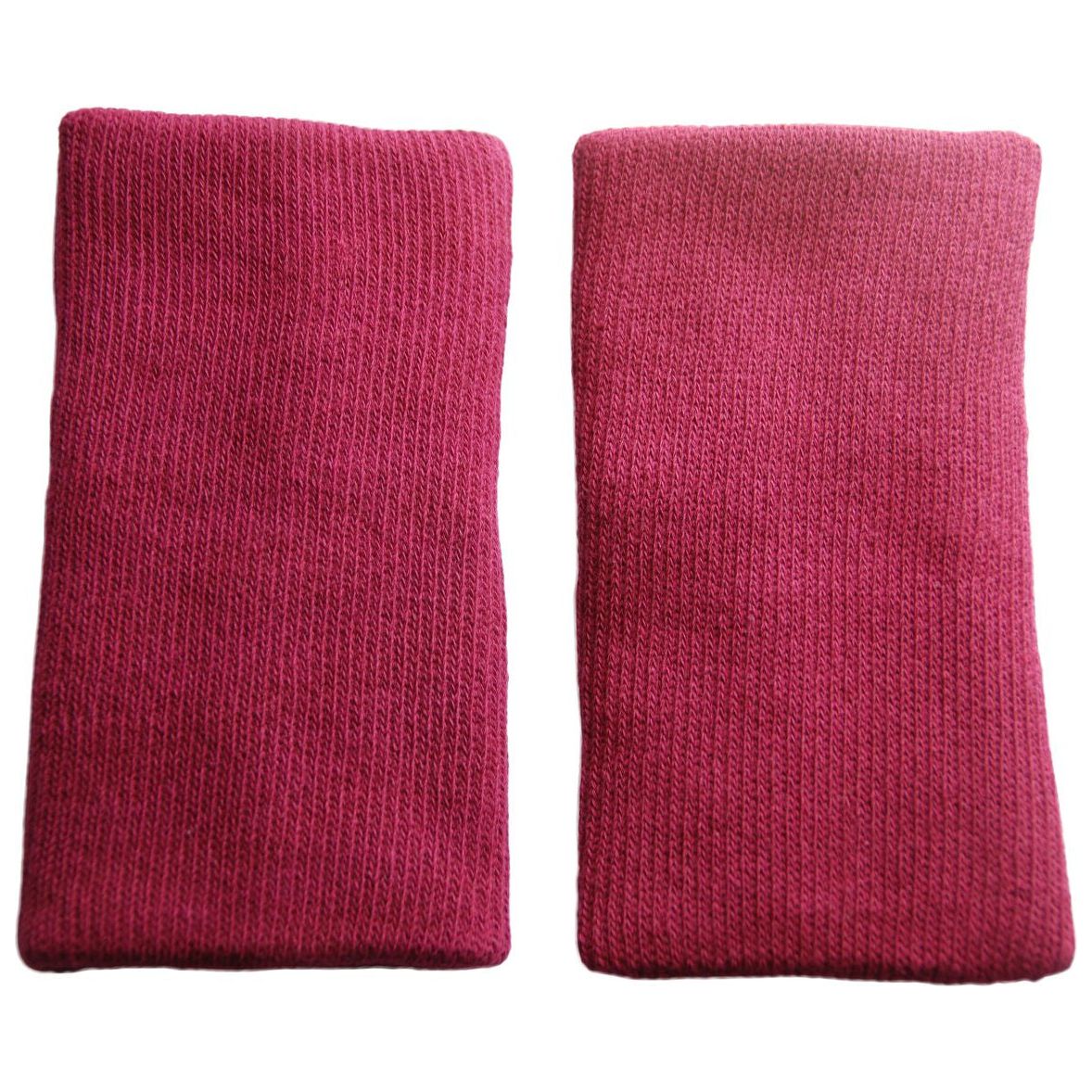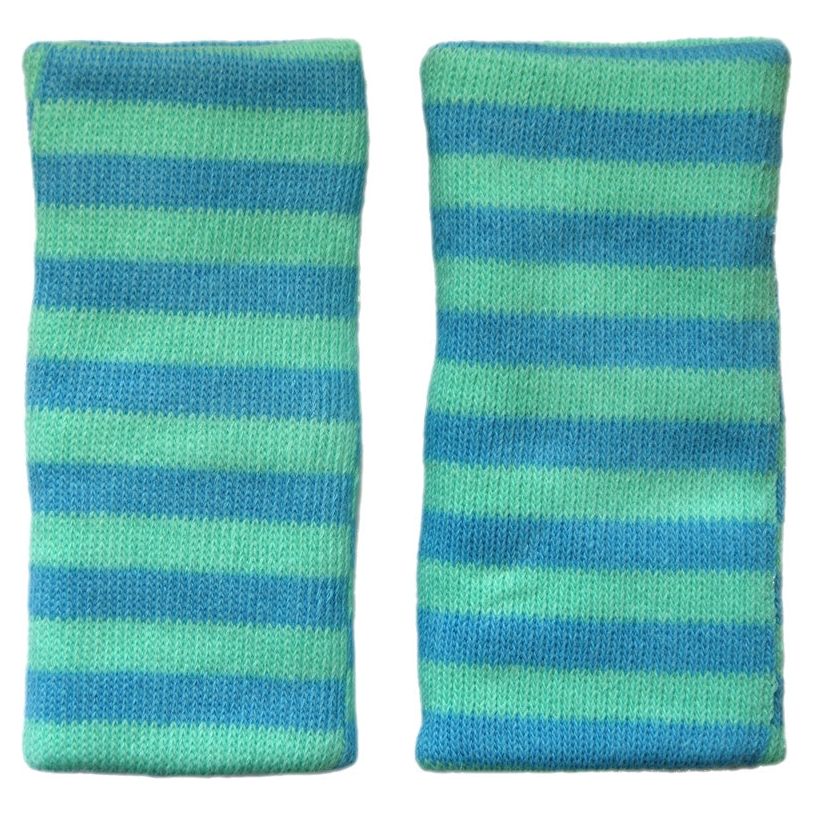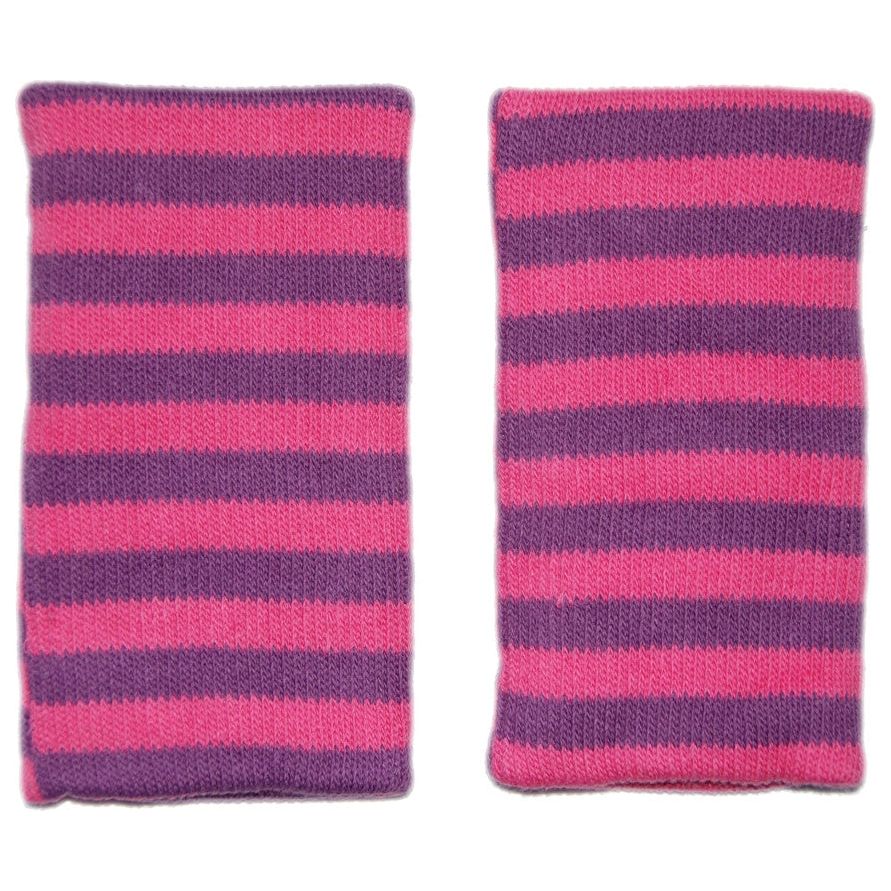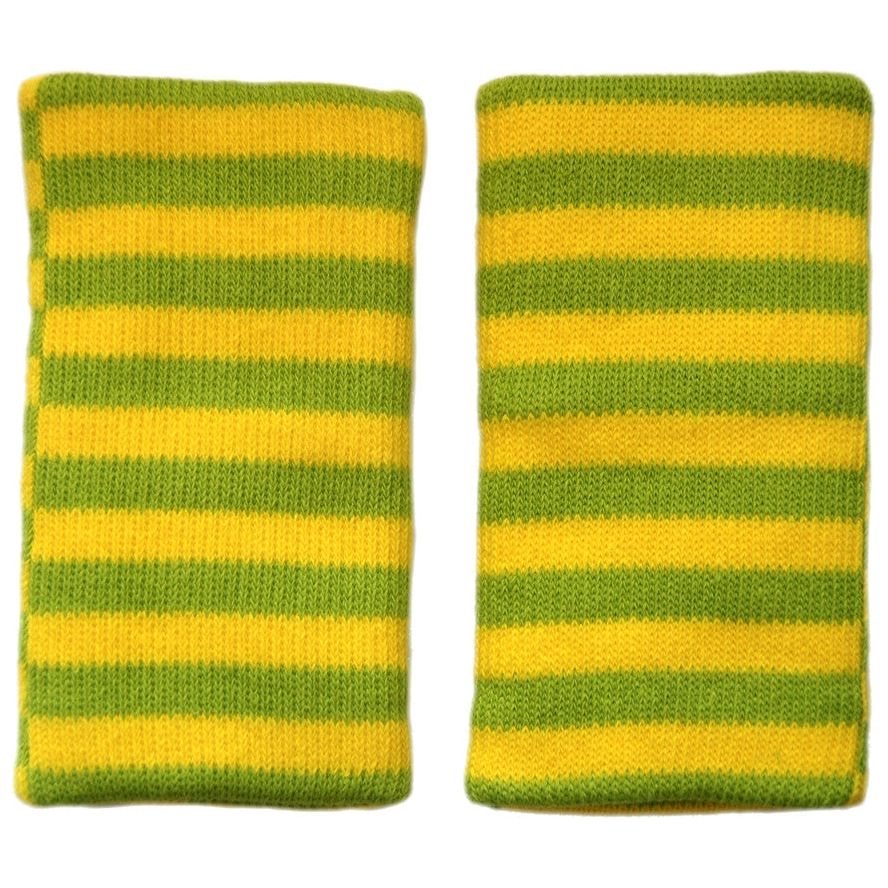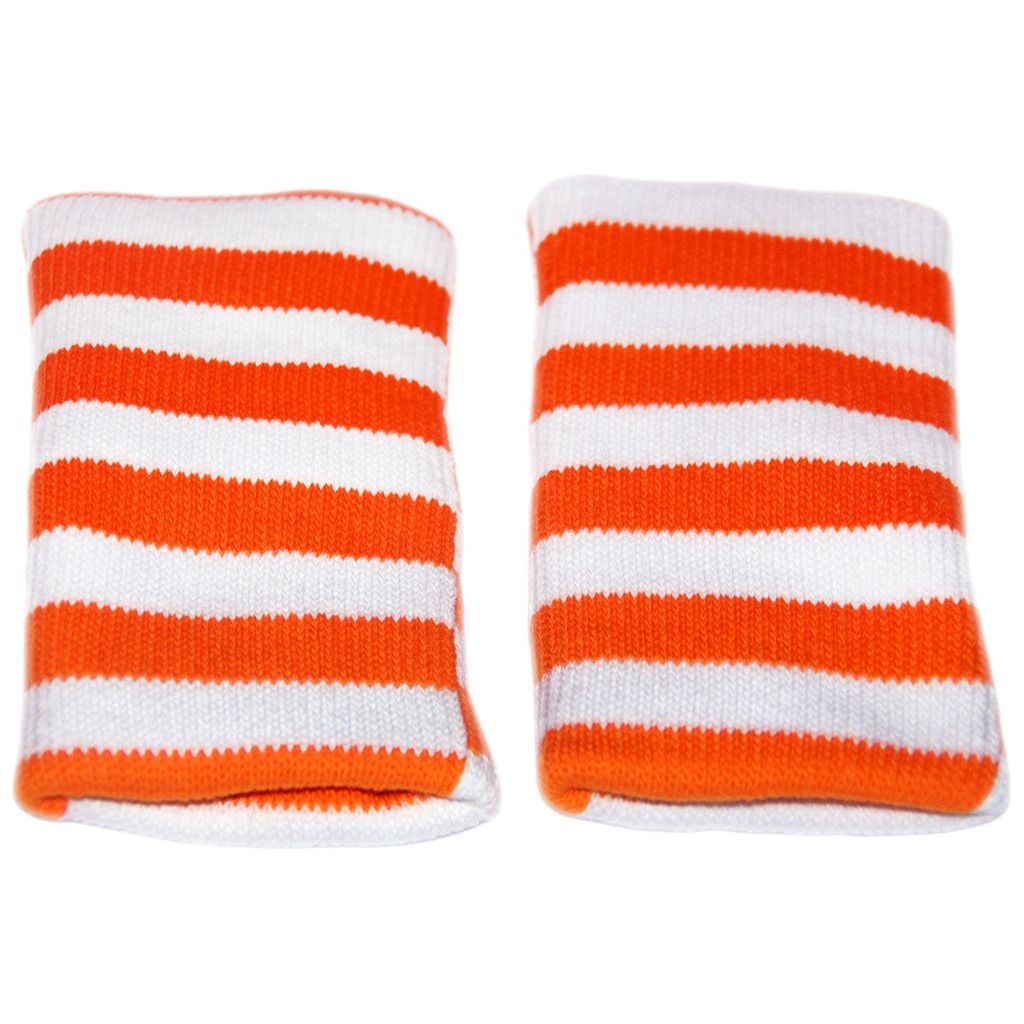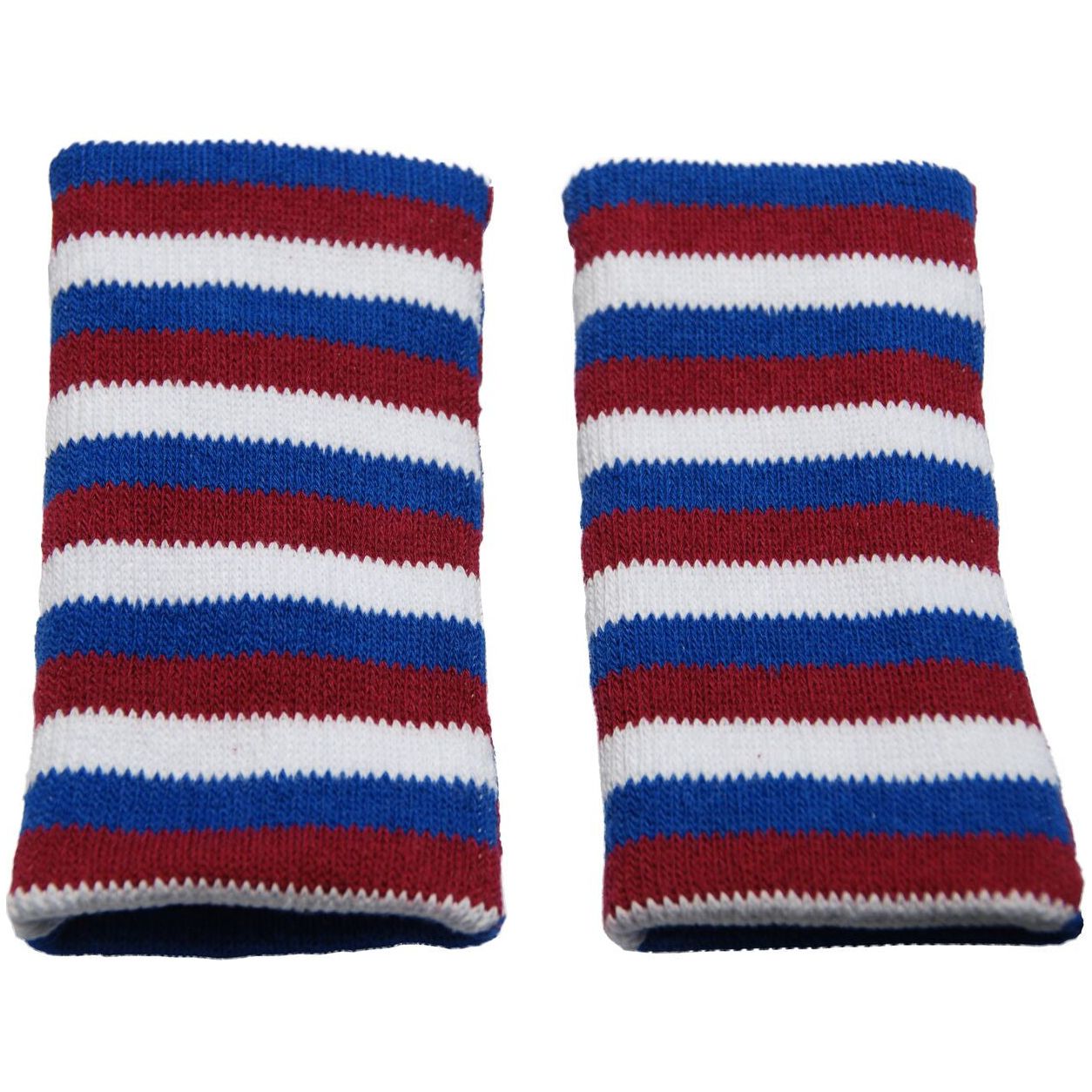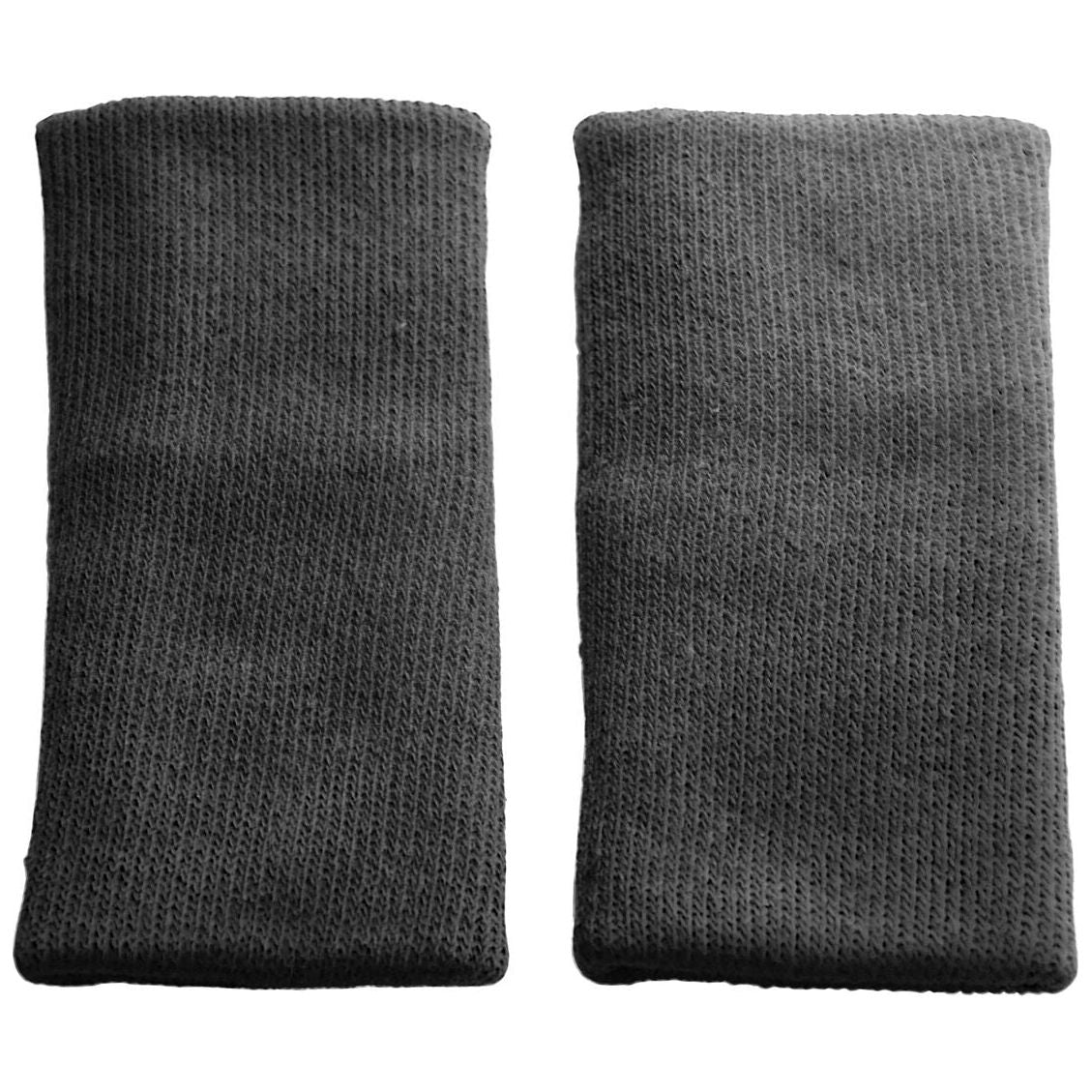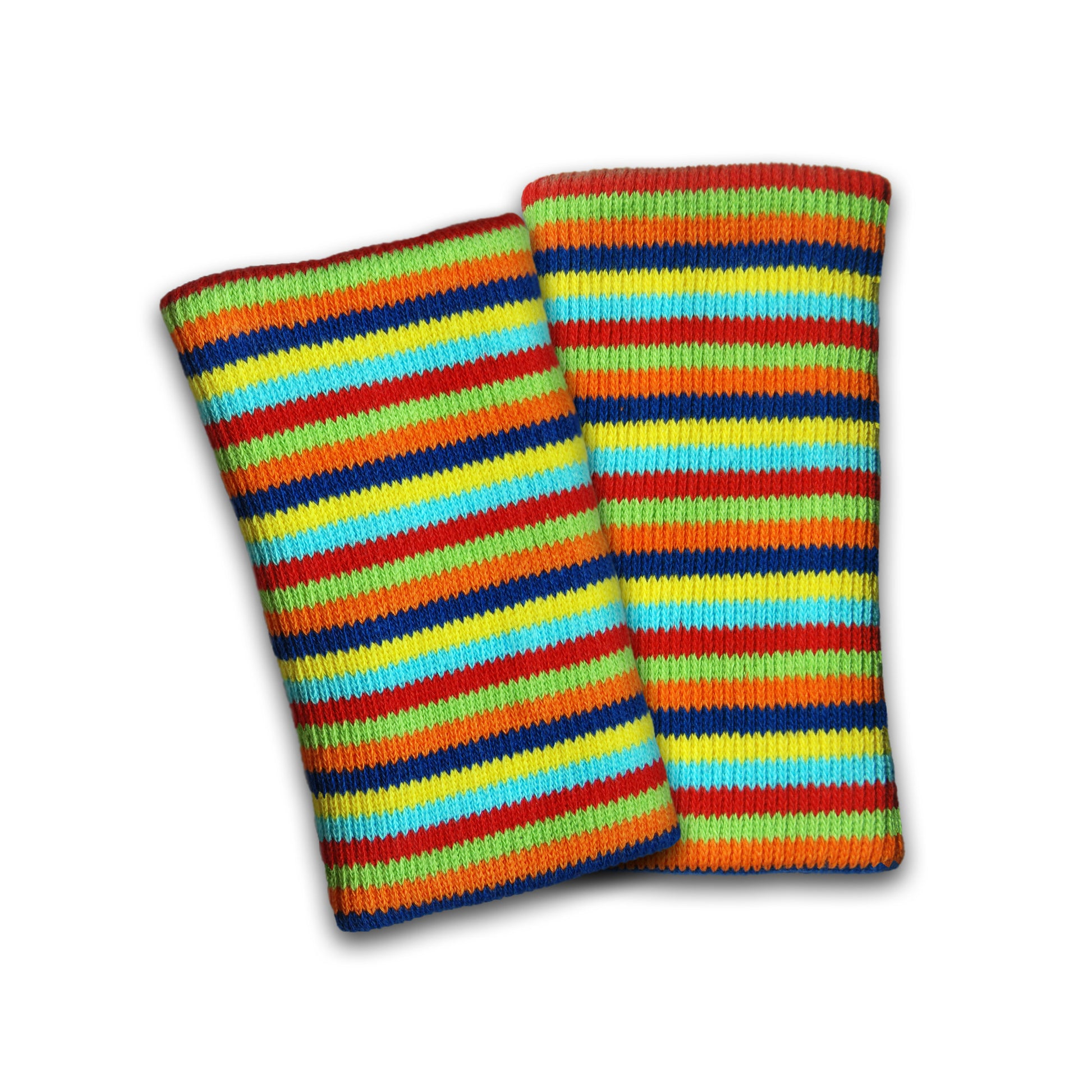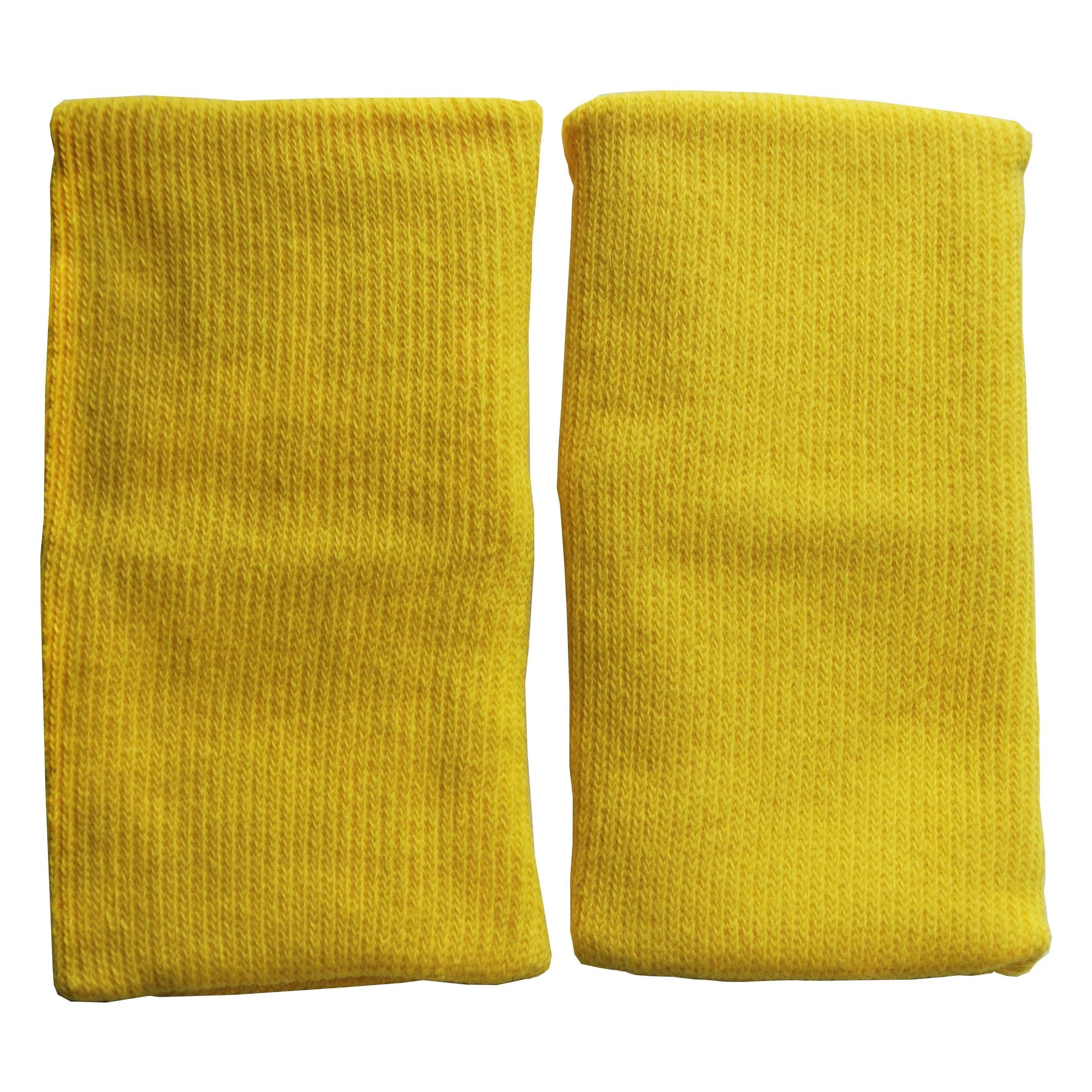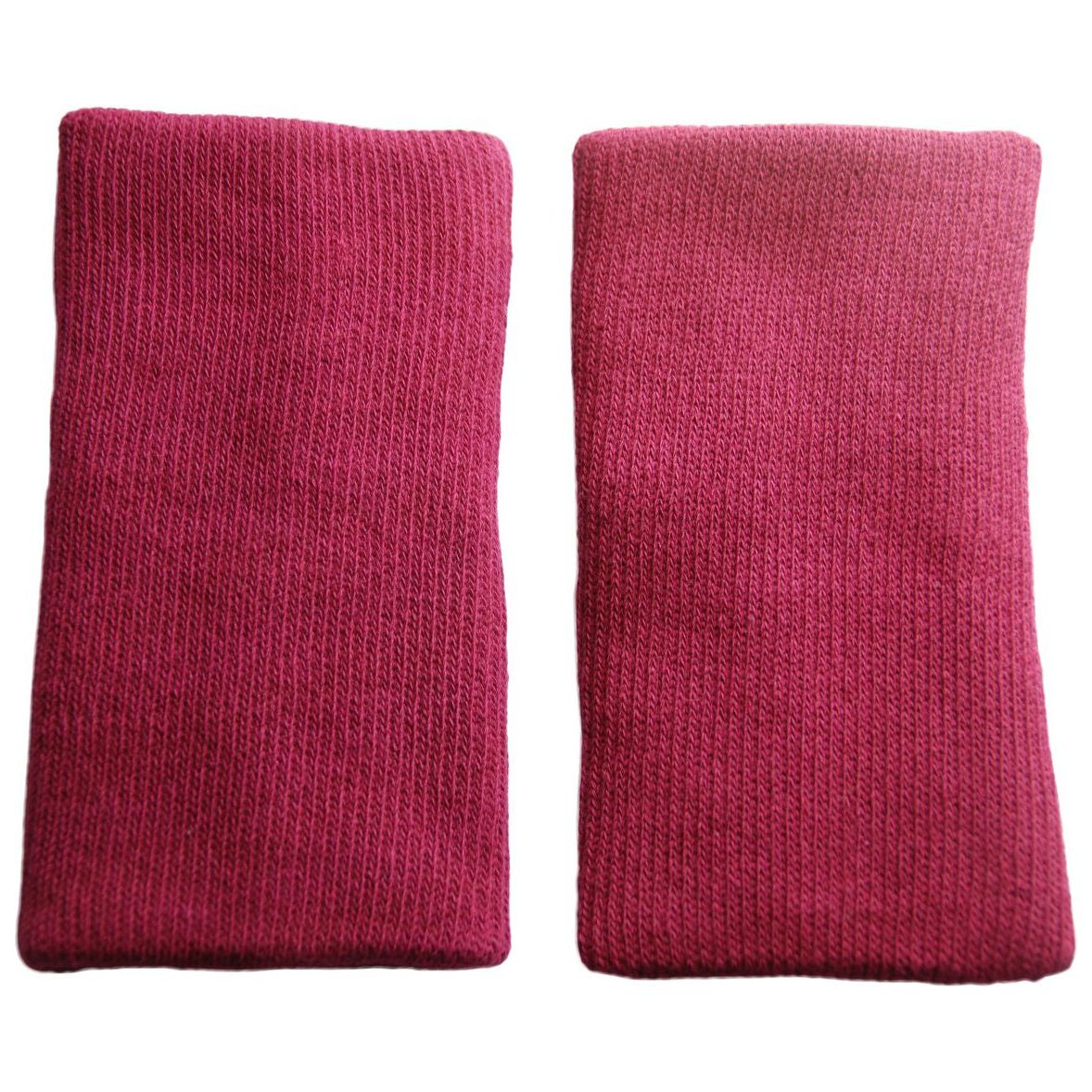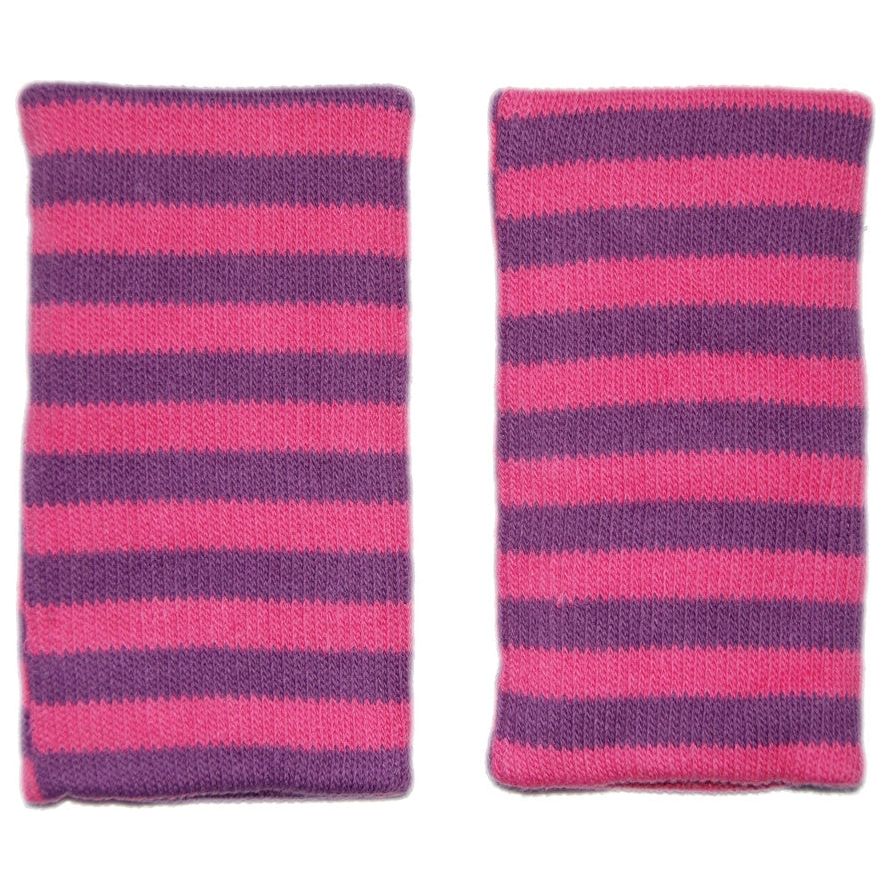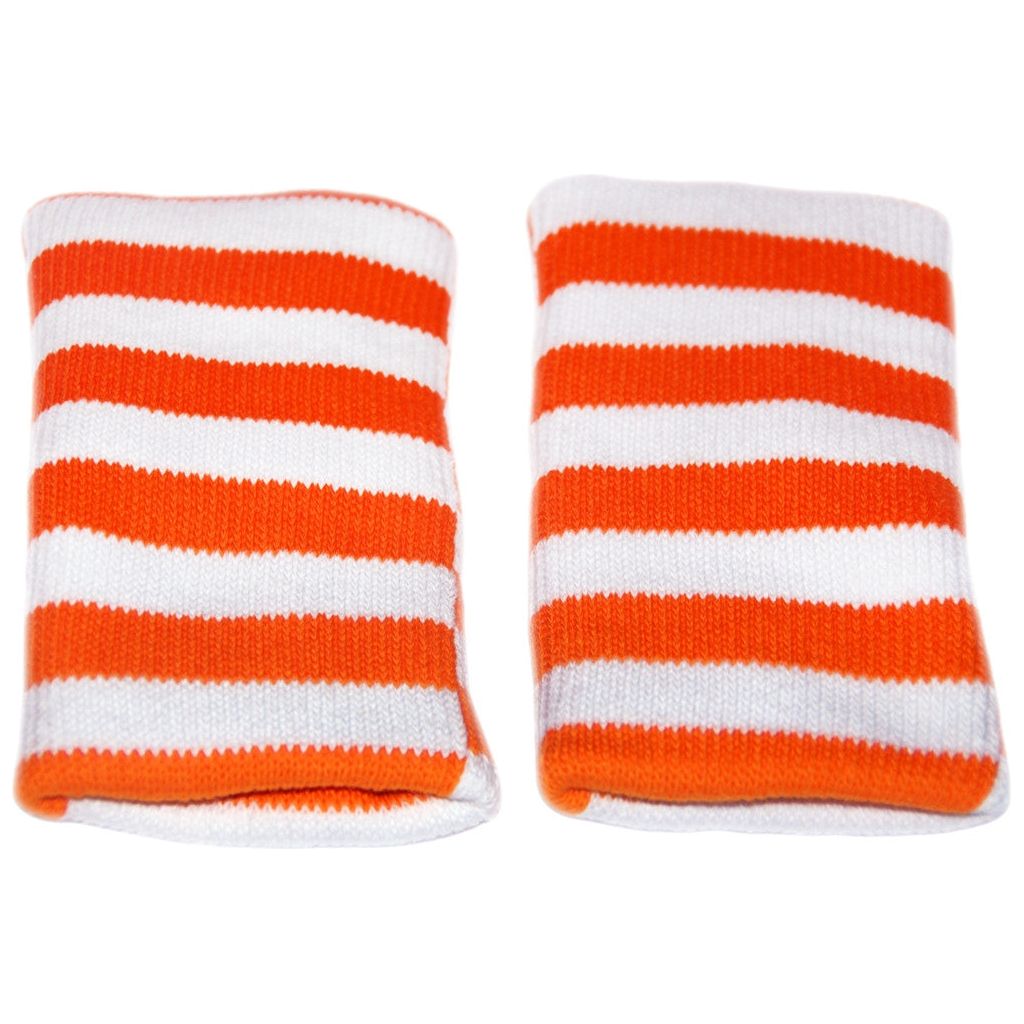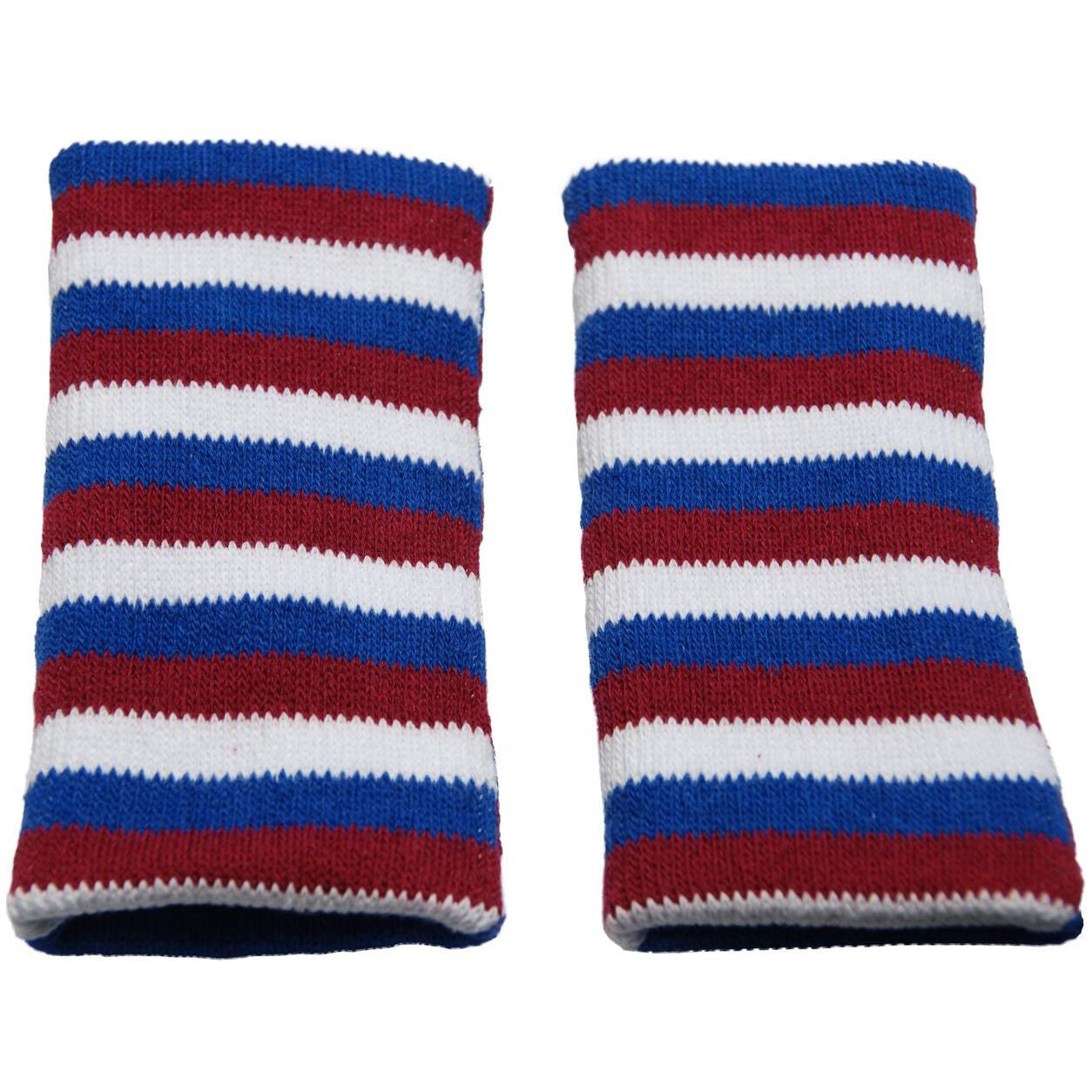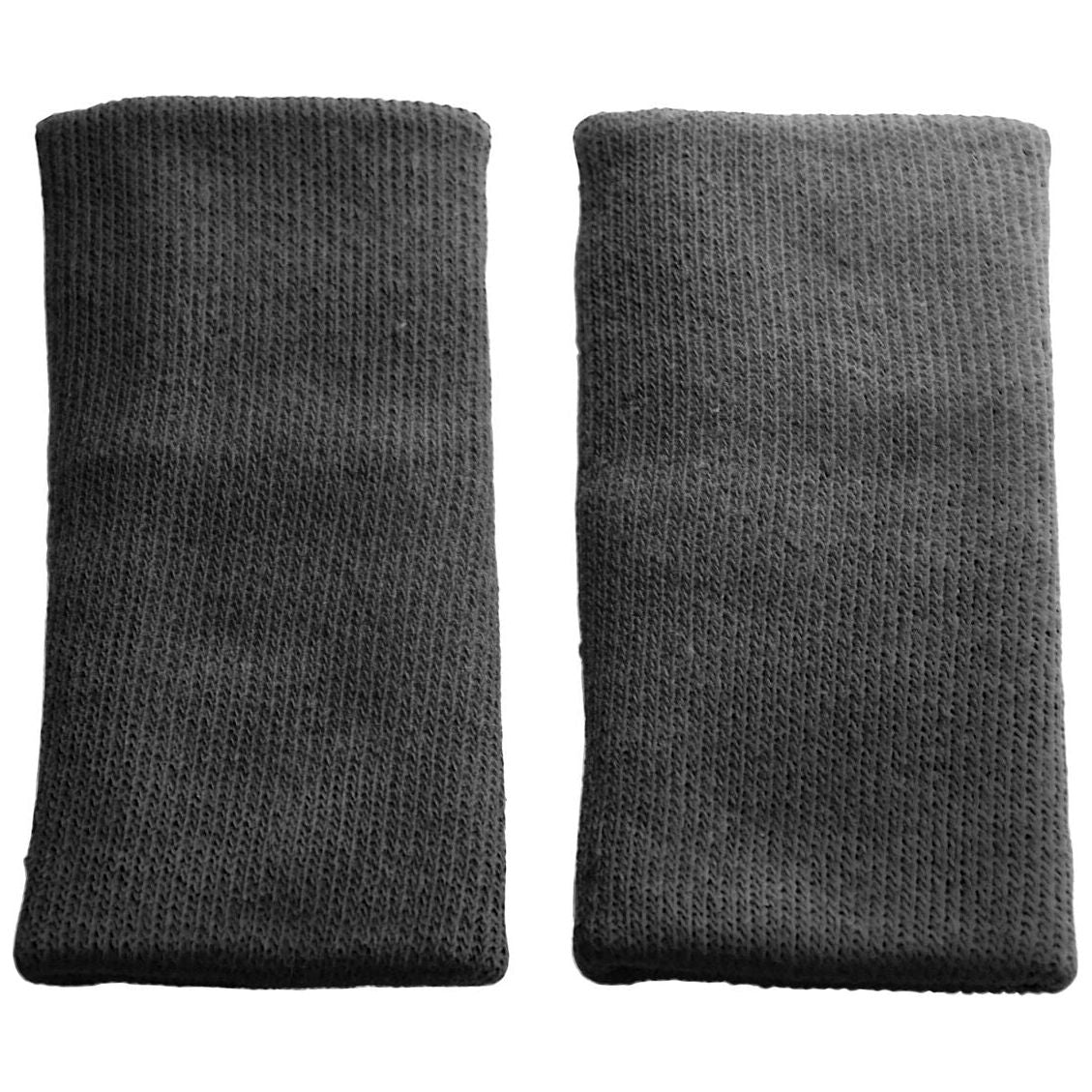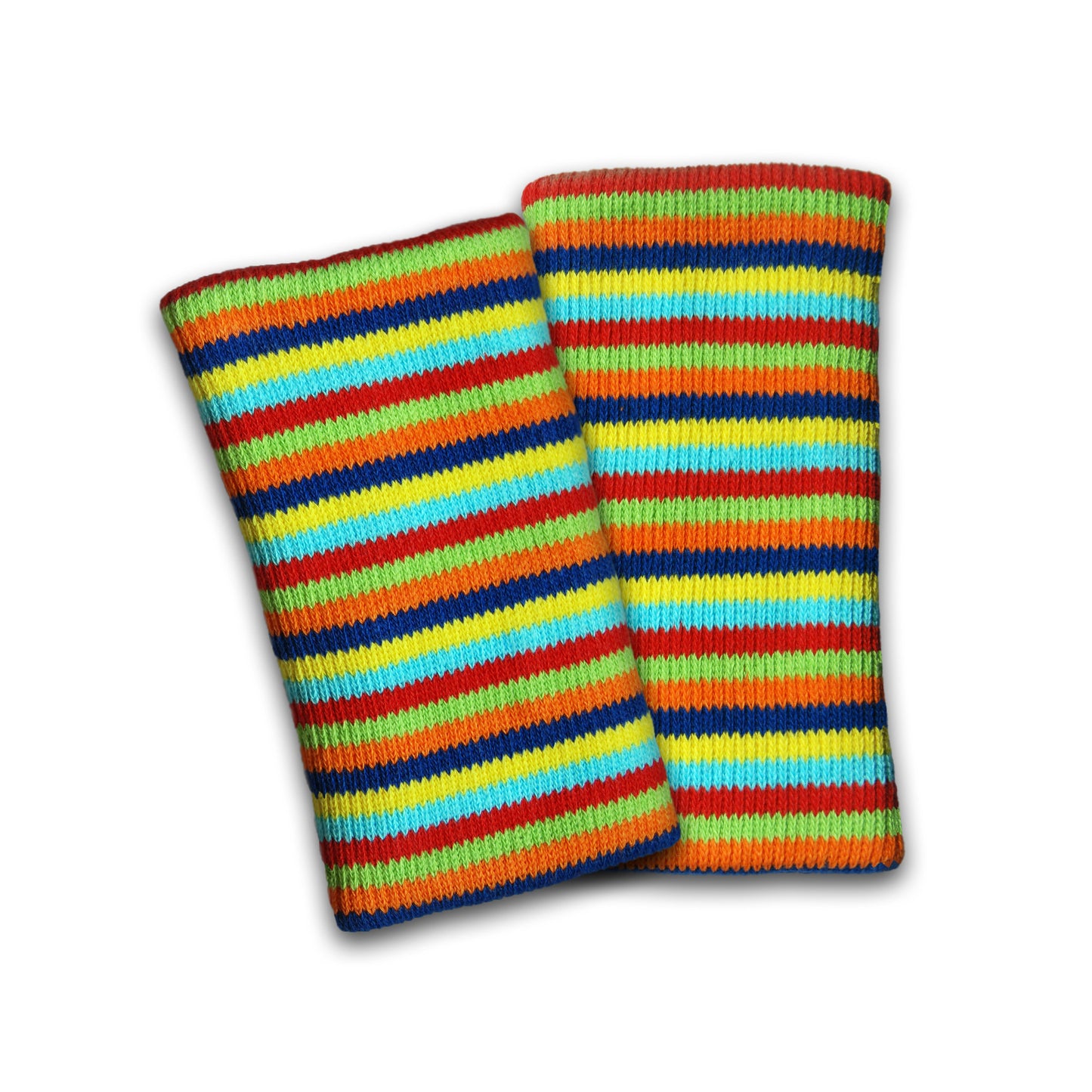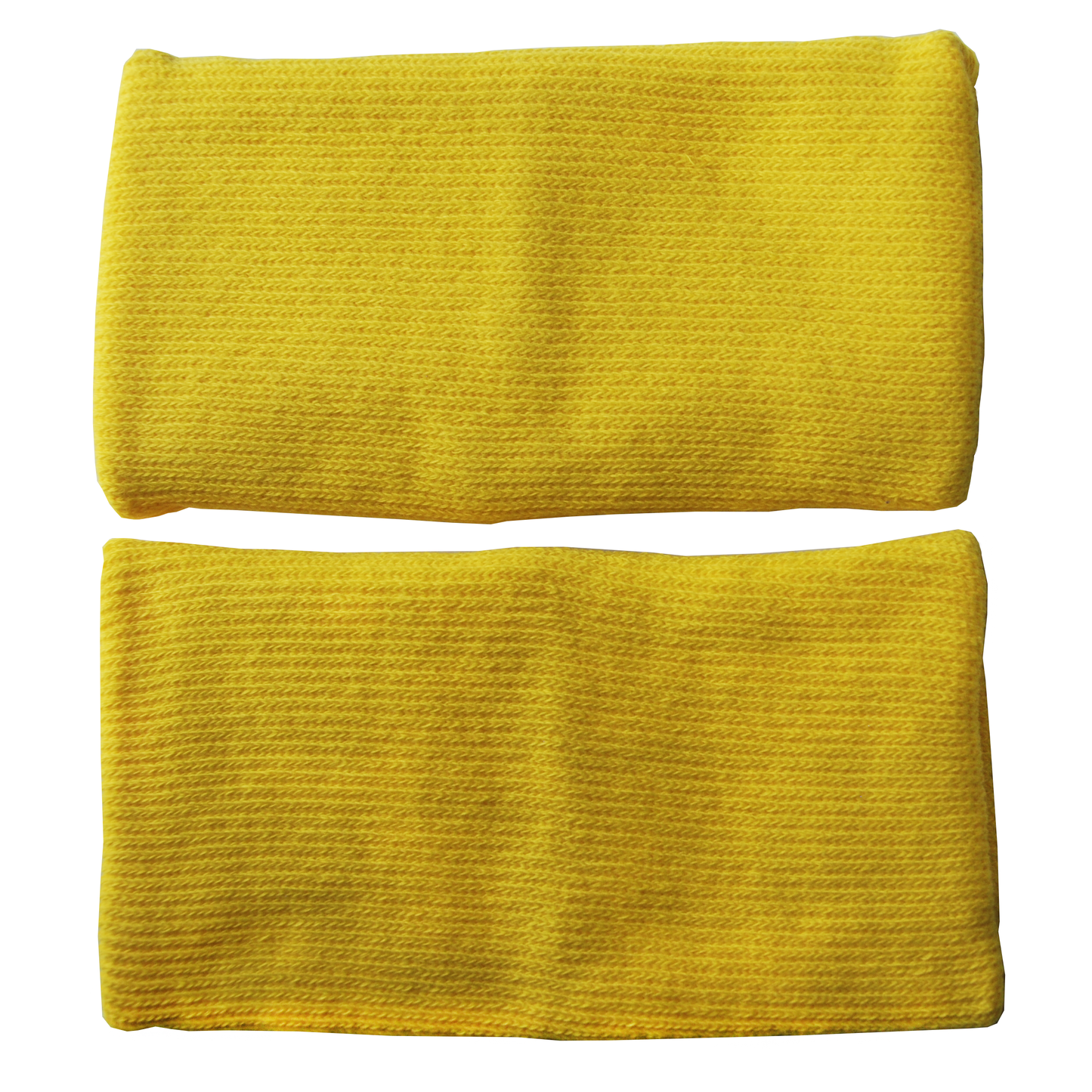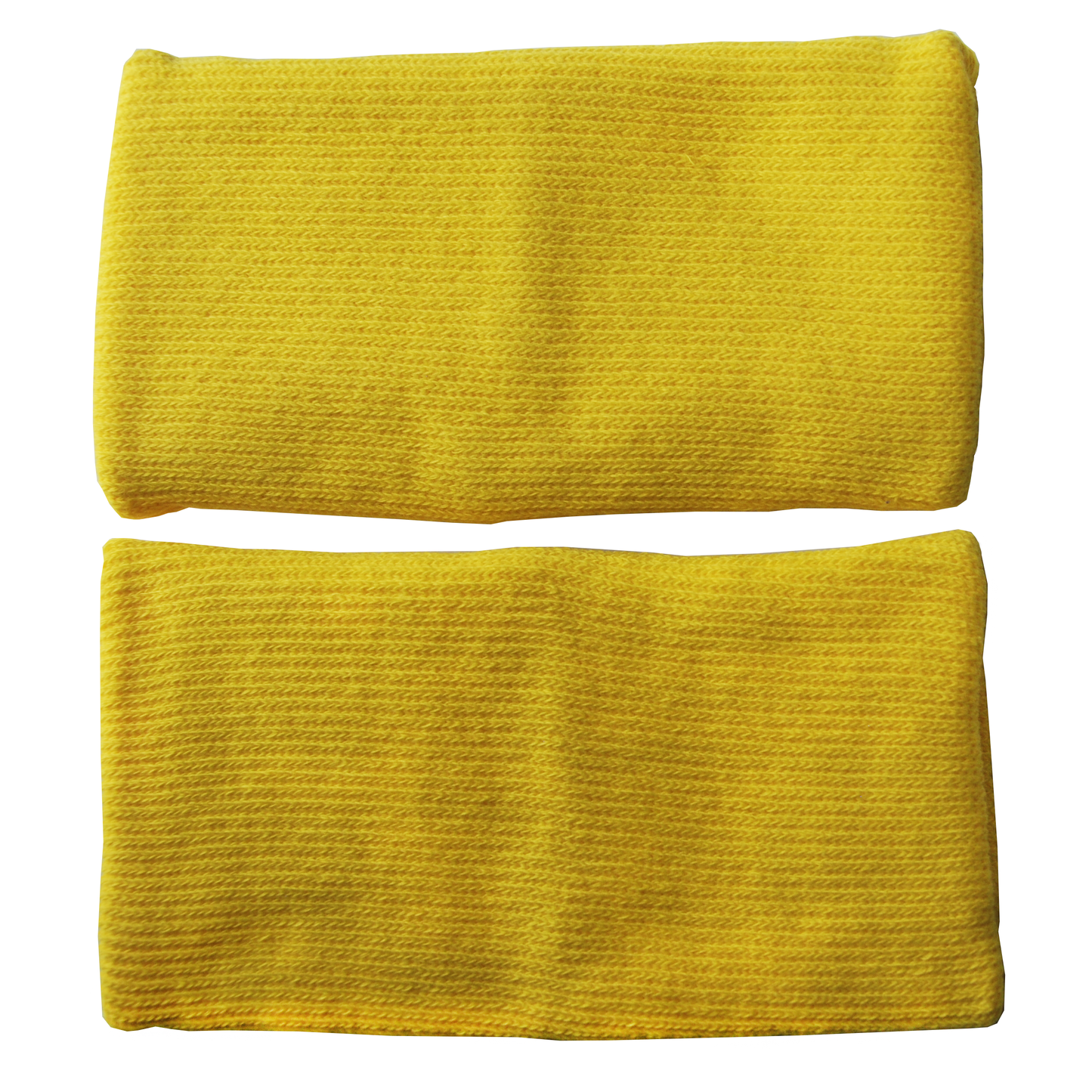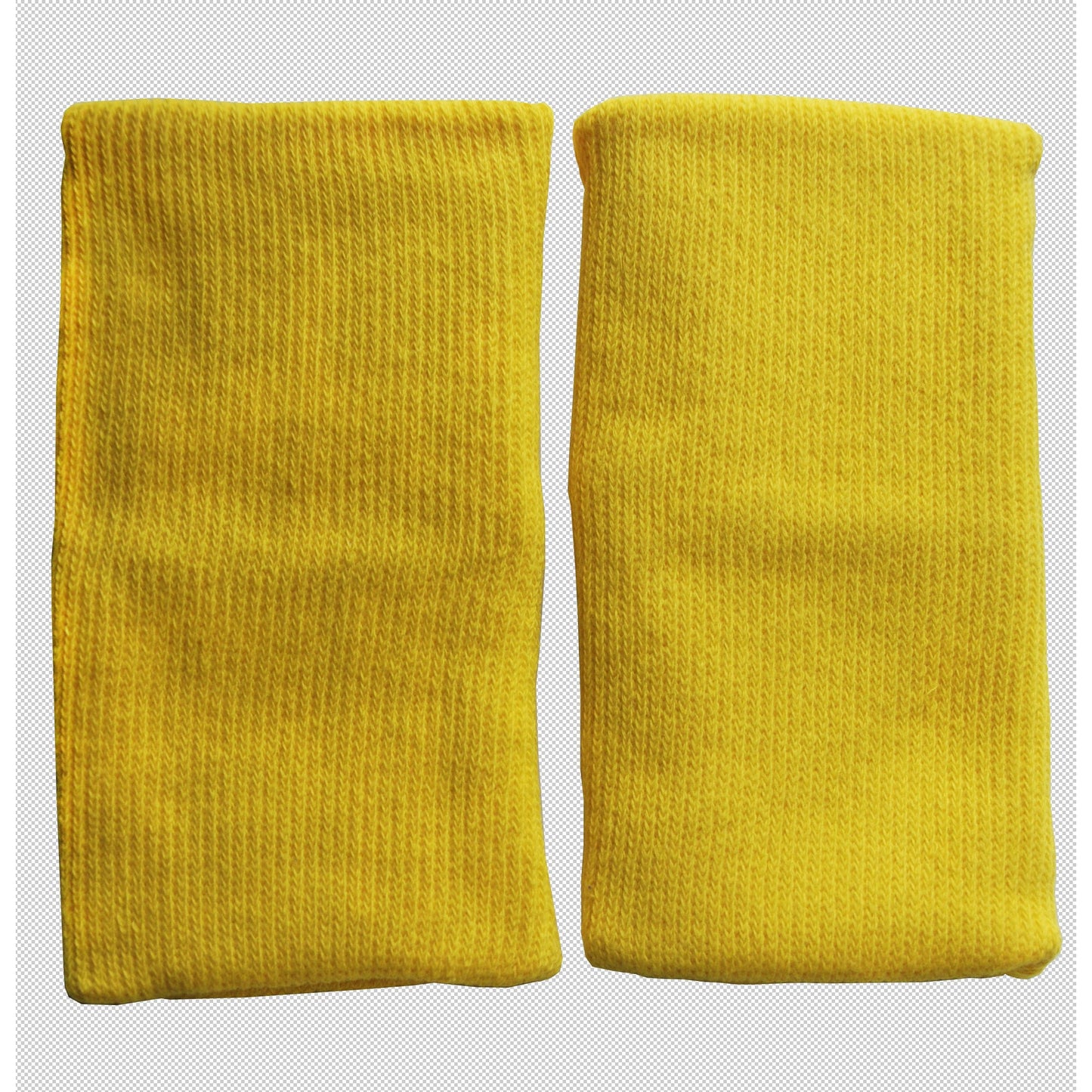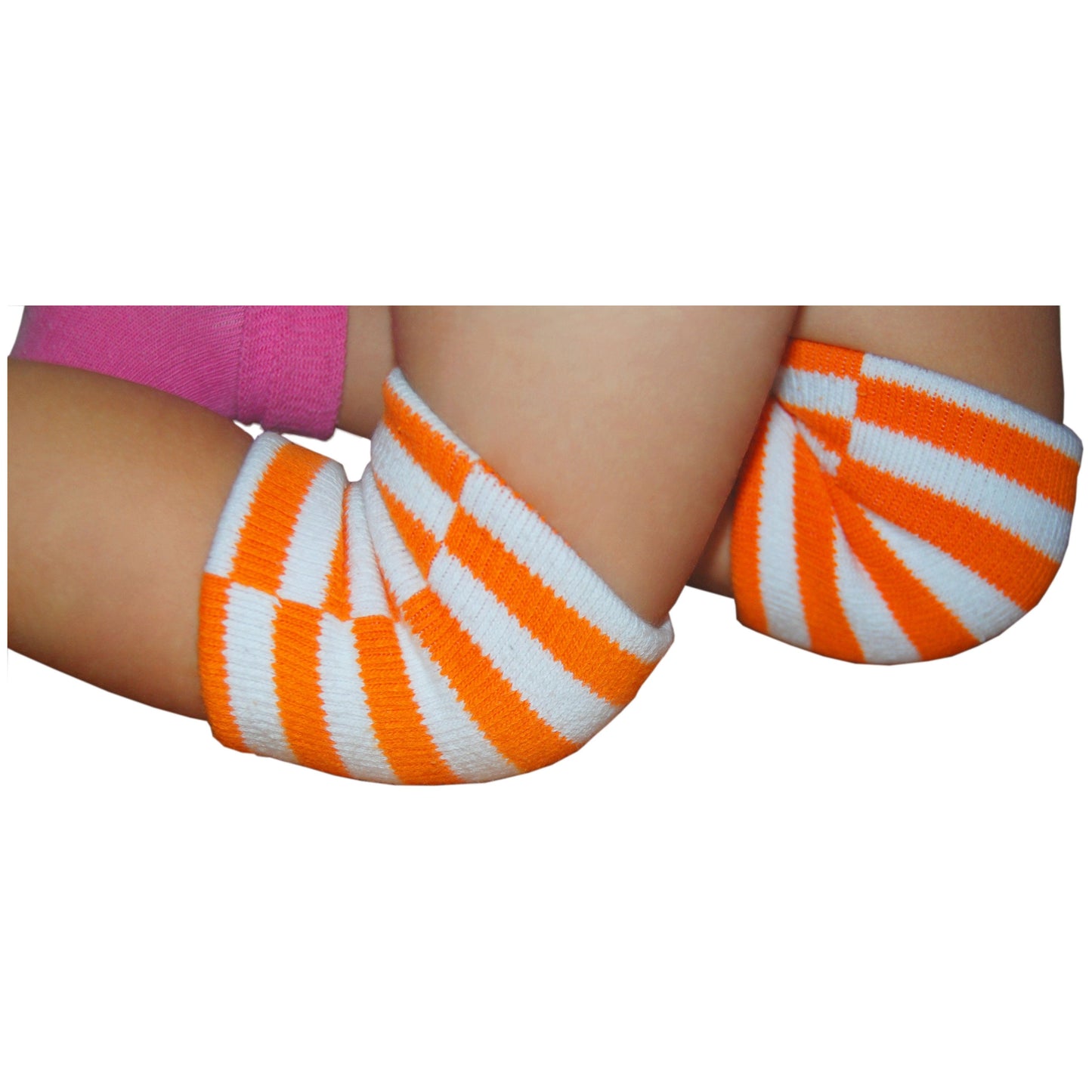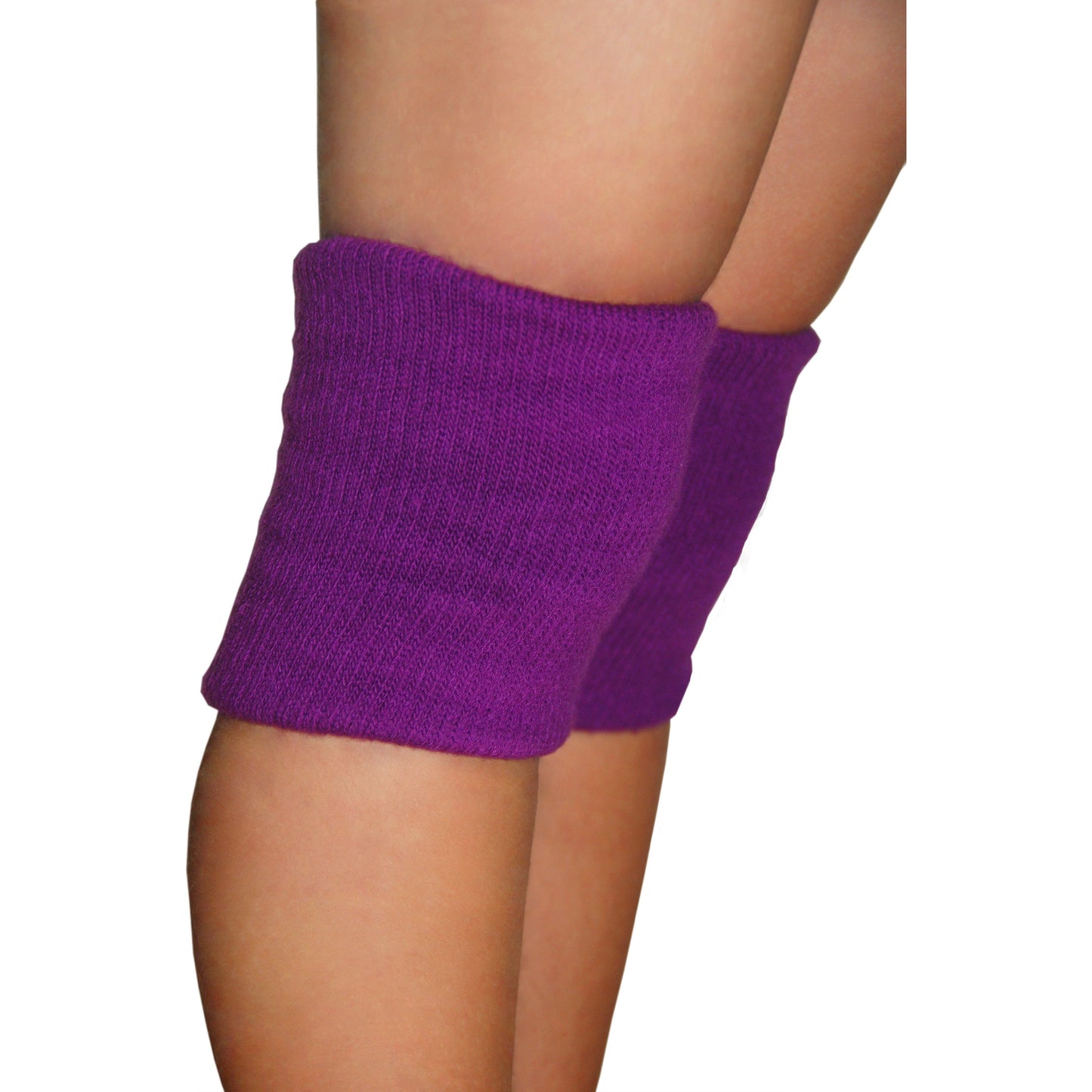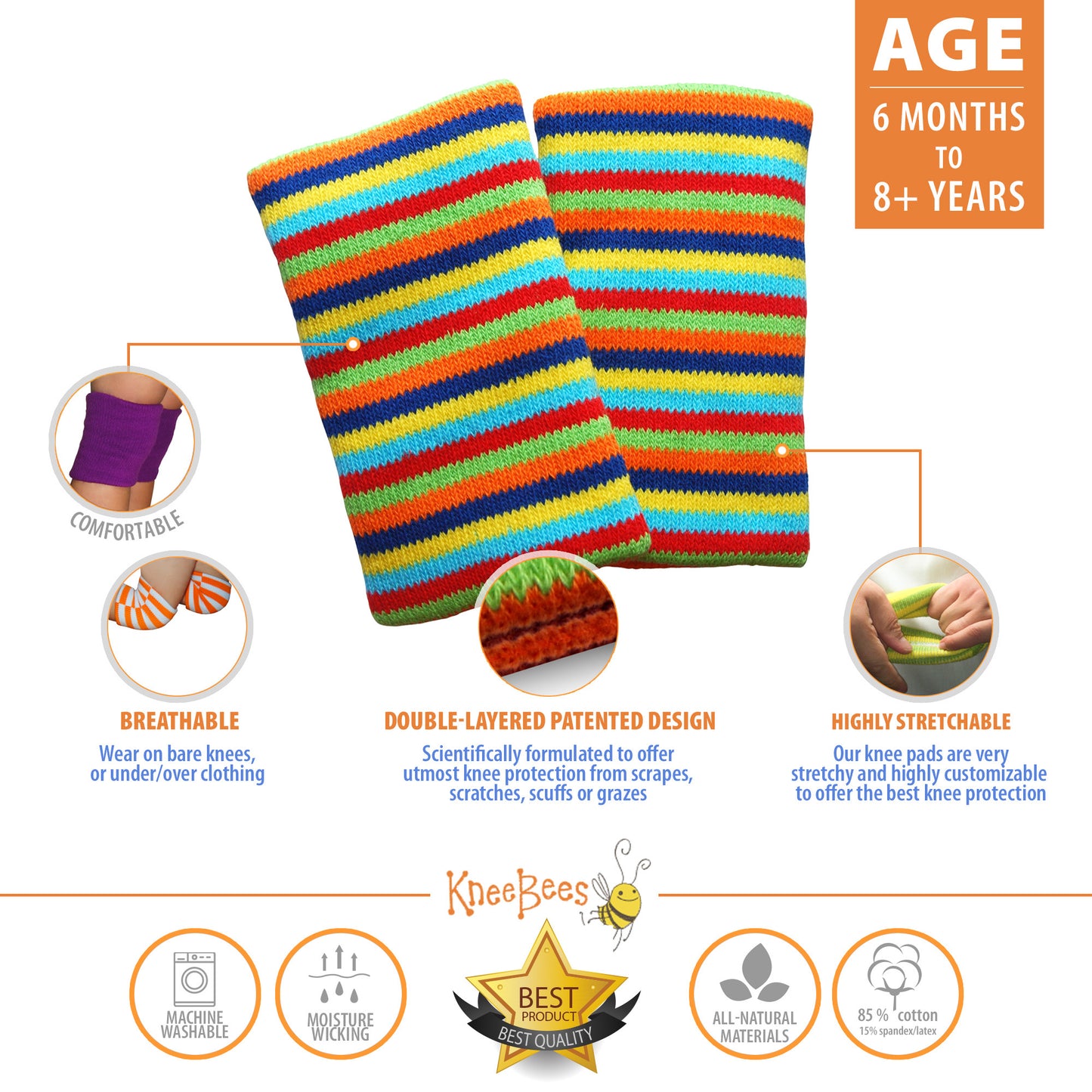Shopping online is super convenient and time saving. We can find great bargains without leaving our home. Sometimes, however, we are reluctant to buy a clothing item, because we are not sure of how it would fit and do not want to deal with returns. The article below may help some to become more confident online buyers. We found this on
www.lifehacker.com, written by
Alan Henry.
"How to Shop for Clothes Online and Get a Perfect Fit

Shopping for clothes online, whether you buy them from a big box store or a custom clothier, can get you great style at bargain prices. Unfortunately it also comes with the worry that because you're buying a clothing item sight-unseen, it just won't fit and you've wasted your money. Here's how to make sure that never, ever happens.
I don't know too many people who love shopping for clothes. I don't mind it, but the ability to shop for clothes online makes it easy to improve your personal style and dress better, and take the stress and shame out of clothes buying. It's natural more and more people would want to do it. It does however come with the stress of possibly having to return whatever you buy because it doesn't fit. It's not like there's a dressing room for Amazon. Well, we can't eliminate you ever having to deal with returns or exchanges, but with a little planning and some smart shopping, we can make sure it's rare.
Get Some Accurate Measurements for Your Body, and Keep Them Up to Date
[caption id="attachment_1139" align="alignnone" width="300"]

Image taken from www.lifehacker.com[/caption]
The first, and perhaps most important thing you can do before you really spend money buying clothes online is to get proper measurements of yourself. Once you have an idea of your size, beyond "large," "size 10," or "42 waist," you'll be able shop without fear. Remember, one company's size 10 is another company's size 8. Labels and designers purposefully use "vanity sizes" to confuse customers, and even though the whole point of sizes and inches is to give consumers standards, one company's 42 inch slacks will fit drastically differently than another's. The best way to fight back is to make sure you have your own measurements. Here's how.
Get a professional to take them for you. Obviously, the best way to get the most accurate measurements possible is to have someone else take them while you're standing normally. If you can, head to a clothing store (I know, the whole point here is to shop online and avoid clothing stores, but just this once) and have your measurements properly taken by someone who does it all the time and knows what they're doing. This is especially important for women and bra sizes—getting properly fitted for a bra is a difficult thing for everyone, and it's even harder if you're alone. Visit a lingerie or womenswear store and get a proper bra fitting so you have it in your back pocket. Alternatively, now would be a good time for you to find a tailor or seamstress in your community that can do adjustments and alterations for you. They'll usually be happy to take your measurements, and may even keep them on file so they don't have to re-take them every time you bring them something that needs work. Once you have them, you'll be ready to shop.
Take them yourself (or have a friend help you out. The alternative to having a pro do it, of course, is to do it yourself. You have to be careful taking your own measurements—don't suck in your gut, or try to stand up straighter than you normally do—trying to "optimize" your posture or size will just lead to uncomfortable clothing in the end. Similarly, if you must take your own measurements, get a friend or family member to help out with the hard to accurately reach places, like the inseam for gents, or the bust for ladies.
For men, you have a couple of areas to pay attention to. For pants and slacks, you'll naturally want your height, waist size, and inseam, but you should also measure your hips and, if you have a more pronounced backside, your "natural hips," or the width around your pelvis across your seat. Having all of those in-hand will make sure you know what you're in for when you buy pants and slacks. For shirts, make sure you take your chest size, your sleeve length, and your neck size. Even if you tend not to wear anything on your upper body that isn't sized in "small/medium/large/xl," those numbers will be what you need for dress shirts, blazers, and suit coats. This article from AskMen and this piece from the Art of Manliness both do a great job of telling you how to measure each part of your body.
For women, you have a few more things to be concerned about. You'll want to measure your bust—the fullest part of your chest, and make note of that. If you want your bra size, we still think a professional bra fitting is best, but considering the teenager working the counter at your local Victoria's Secret may not exactly be a "professional," you might consider True&Co., an online lingerie retailer that has a detailed, in-depth quiz you can take online to get a decent fit. You'll also want to measure your "natural waist," or the slimmest part of your torso, not necessarily your actual waist where your pants rest. Then go ahead and take your actual waist measurements. It's not often used in women's clothing, but it's good to have. Women's clothing usually use hip measurements more often—or the size around the fullest part of your body at the top of the leg, around and across your seat. You'll also want your inseam for slacks and pants. If you plan to wear collared shirts and blouses, take all of the same measurements mentioned above well, including neck size and sleeve length. Even if you don't encounter see much clothing that makes note of them, you'll be happy to have them—along with bust size, you'll be in good shape to buy a button-down that looks good. This article from Lauren Conrad and this guide from Frida Fashions both give you guides and charts to help out.
Five Best Online Custom Clothing Stores
For gents, this interactive measuring tool from Indochino, one of your favorite online custom clothing stores, can help you take your measurements and save them for safe keeping in no time. For ladies, this walkthrough video from ModCloth can walk you through taking your measurements and apply them to size charts before you buy anything.
Choose the Right Retailers and Always Check the Sizing Charts
[caption id="attachment_1140" align="alignnone" width="300"]

Image taken from www.lifehacker.com[/caption]
Speaking of size charts, once you have your measurements, size charts will be your best friend. You won't ever need to trust that a "large" is indeed "large enough" to fit you—you can just look at the sizing chart, find yourself on it, and go from there. If you've been shopping for clothes online for a while, you may already know this, but it's even more important when you're shopping online, especially from retailers that carry different labels, designers, and clothing manufacturers.
If you're shopping from a custom clothier where everything you buy is made or tailored to order, or from a clothing store that promises consistent measurements across all of their products, you'll only need to review the sizing chart once to get a feel for what will fit you and what won't. Companies like Indochino, Black Lapel, and Modern Tailor for men, and eShakti, entreDonovan, ModCloth, and Bow and Drape for women, all promise that when you buy clothes from them, they'll fit according to the size charts publicly available on their websites before you buy. If getting the right fit is paramount, you'll want to make sure you patronize a shop that guarantees the fit of its items, and makes their sizing charts clear, plain, and public—and most importantly, applicable to everything they sell.
Similarly, online-only clothiers like ASOS, Need Supply, StyleBop, JackThreads (Men), Mikkat Market (Women), PiperLime (Women), all have size guarantees and promise to work with you to get a perfect fit on whatever you buy (with conditions, of course), but it's important to read the sizing charts before you buy so you don't have to go through the hassle in the first place. They all sell clothes from different designers and brands, so keep in mind that the size chart for one item may not apply to everything. Look for a site-wide chart, but even if you find one, check for sizing notes on the items you're thinking about buying. Look at customer reviews, too, if they're available. You don't want to clean out the closet one day and find a blouse you meant to send back because it was too small but never did—and now it's way too late to return it.
Major retailers like Amazon, and brick and mortar retailers that also have web sites you can shop from, like Old Navy, J.Crew, Casual Male (Men), Lane Bryant (Women), Torrid (Women), H&M, and Zara all sell clothing from a variety of labels, styles, and designers. That means it's even more important for you to make sure you check sizing charts for everything you consider buying. You likely won't find site-wide sizing charts here. It's especially important with a site like Amazon (at least with the others, if you have to go to a store to exchange something, you can). You don't want to be caught off guard when one pair of pants in your order fits perfectly and another is too loose because they're actually different cuts or styles.
Make Notes On Brands, Retailers, and Designers You've Bought Before
[caption id="attachment_1141" align="alignnone" width="300"]

Image taken from www.lifehacker.com[/caption]
Part of the reason we listed a number of retailers is so you have plenty of purchase options to explore. Most are general clothiers. If you dive deeper a bit, you can find sites that sell everything from custom shoes to hand-made belts and ties. Once you've looked over their respective sizing charts and found some retailers that sell clothes in your size and personal style, you're in good shape to start shopping. Grab a notebook or use your favorite note-taking app to jot down the name of the retailer you shopped with, what you bought (especially if it's from a specific designer or has a specific cut or style), its size, and how well it fits.
Keeping notes like this for clothes may sound silly, but it's really important. When you hit on a brand, a cut, or a style that really works for you, you'll be able to find it again easily. You'll also always know that a specific brand is cut a certain way and fits you well. Label sizes won't be as important anymore, and you'll know that even though the size chart says you should be a size 14, this company's size 12 fits you perfectly, while that company requires you to step up to a 16, for example. After a couple of purchases, you'll have a stable of brands, designers, and cuts that you know always work for you. When you choose to branch out, it won't be like taking a shot in the dark—you'll have an informed opinion and be able to make an educated guess as to what you'll get.
Go Custom with Made-to-Order Clothing
[caption id="attachment_1142" align="alignnone" width="300"]

Image taken from www.lifehacker.com[/caption]
We mentioned a number of completely custom clothiers a bit earlier, and if you really want to make sure you get a perfect fit out of the box (and have the cash to spare), they're a great way to go. Most of the ones we discuss offer formalwear, dresses, suits, dress shirts, and slacks for sale, but there are plenty more that cover casual clothes, men's and women's designs, even underwear. Since custom clothiers either make your clothes to order—or at least take forms off the rack and alter to fit you, it's important to give them as accurate measurements as possible.
Indochino and Black Lapel, both of whom I've had experience with, use your measurements as a general guide. Then, when you get your clothes, they expect you to try them on, give them a whirl, and then send them back with specific alterations and tweaks you want them to make. Most other online retailers, both for men and women, usually expect the same. Don't be afraid to send completely custom clothes back if they're not perfect, and don't just settle for what you get out of the box. It's a lot of back-and-forth, but if you're committed to ordering online (and you don't mind a trip or two to the post office), it's a great way to get a perfect fit over the long haul.P
Get a Tailor or Seamstress and Buy (Slightly) Large
[caption id="attachment_1143" align="alignnone" width="300"]

Image taken from www.lifehacker.com[/caption]
Whether you go completely custom or buy off the virtual "rack," as it were, find a tailor or a seamstress in your community that's willing to do alterations and adjustments to your clothes for you. The words "tailor" and "seamstress" usually conjure images of wealthy people getting minute tweaks to their clothes, but nothing could be further from the truth. There's probably a tailor or seamstress in your neighborhood who'd be more than happy for your business. Get your dresses and dress shirts fitted so they accentuate your figure. Get your jeans and slacks properly hemmed. We mentioned this when we discussed how to get a versatile suit, but the advice goes for formalwear and casual clothing, for men and for women. The money you'll spend is well worth it for the sharp, well-fitted look you'll get out of it.
Once you have your measurements, find some retailers you can trust, and have a tailor in your back pocket to make alterations to anything you buy, you'll be able to make sure any piece of clothing you buy online will, at least eventually, fit you perfectly. We have a lot of great things to say about custom clothiers, but even they need you to be an educated customer first if you want the best possible look, fit, and match for your personal style. It's a great feeling to buy something, either custom or off the rack, and find it fits perfectly right out of the box. All it takes is a little prep and foresight to get there."
 Shopping for clothes online, whether you buy them from a big box store or a custom clothier, can get you great style at bargain prices. Unfortunately it also comes with the worry that because you're buying a clothing item sight-unseen, it just won't fit and you've wasted your money. Here's how to make sure that never, ever happens.
I don't know too many people who love shopping for clothes. I don't mind it, but the ability to shop for clothes online makes it easy to improve your personal style and dress better, and take the stress and shame out of clothes buying. It's natural more and more people would want to do it. It does however come with the stress of possibly having to return whatever you buy because it doesn't fit. It's not like there's a dressing room for Amazon. Well, we can't eliminate you ever having to deal with returns or exchanges, but with a little planning and some smart shopping, we can make sure it's rare.
Get Some Accurate Measurements for Your Body, and Keep Them Up to Date
[caption id="attachment_1139" align="alignnone" width="300"]
Shopping for clothes online, whether you buy them from a big box store or a custom clothier, can get you great style at bargain prices. Unfortunately it also comes with the worry that because you're buying a clothing item sight-unseen, it just won't fit and you've wasted your money. Here's how to make sure that never, ever happens.
I don't know too many people who love shopping for clothes. I don't mind it, but the ability to shop for clothes online makes it easy to improve your personal style and dress better, and take the stress and shame out of clothes buying. It's natural more and more people would want to do it. It does however come with the stress of possibly having to return whatever you buy because it doesn't fit. It's not like there's a dressing room for Amazon. Well, we can't eliminate you ever having to deal with returns or exchanges, but with a little planning and some smart shopping, we can make sure it's rare.
Get Some Accurate Measurements for Your Body, and Keep Them Up to Date
[caption id="attachment_1139" align="alignnone" width="300"] Image taken from www.lifehacker.com[/caption]
The first, and perhaps most important thing you can do before you really spend money buying clothes online is to get proper measurements of yourself. Once you have an idea of your size, beyond "large," "size 10," or "42 waist," you'll be able shop without fear. Remember, one company's size 10 is another company's size 8. Labels and designers purposefully use "vanity sizes" to confuse customers, and even though the whole point of sizes and inches is to give consumers standards, one company's 42 inch slacks will fit drastically differently than another's. The best way to fight back is to make sure you have your own measurements. Here's how.
Get a professional to take them for you. Obviously, the best way to get the most accurate measurements possible is to have someone else take them while you're standing normally. If you can, head to a clothing store (I know, the whole point here is to shop online and avoid clothing stores, but just this once) and have your measurements properly taken by someone who does it all the time and knows what they're doing. This is especially important for women and bra sizes—getting properly fitted for a bra is a difficult thing for everyone, and it's even harder if you're alone. Visit a lingerie or womenswear store and get a proper bra fitting so you have it in your back pocket. Alternatively, now would be a good time for you to find a tailor or seamstress in your community that can do adjustments and alterations for you. They'll usually be happy to take your measurements, and may even keep them on file so they don't have to re-take them every time you bring them something that needs work. Once you have them, you'll be ready to shop.
Take them yourself (or have a friend help you out. The alternative to having a pro do it, of course, is to do it yourself. You have to be careful taking your own measurements—don't suck in your gut, or try to stand up straighter than you normally do—trying to "optimize" your posture or size will just lead to uncomfortable clothing in the end. Similarly, if you must take your own measurements, get a friend or family member to help out with the hard to accurately reach places, like the inseam for gents, or the bust for ladies.
For men, you have a couple of areas to pay attention to. For pants and slacks, you'll naturally want your height, waist size, and inseam, but you should also measure your hips and, if you have a more pronounced backside, your "natural hips," or the width around your pelvis across your seat. Having all of those in-hand will make sure you know what you're in for when you buy pants and slacks. For shirts, make sure you take your chest size, your sleeve length, and your neck size. Even if you tend not to wear anything on your upper body that isn't sized in "small/medium/large/xl," those numbers will be what you need for dress shirts, blazers, and suit coats. This article from AskMen and this piece from the Art of Manliness both do a great job of telling you how to measure each part of your body.
For women, you have a few more things to be concerned about. You'll want to measure your bust—the fullest part of your chest, and make note of that. If you want your bra size, we still think a professional bra fitting is best, but considering the teenager working the counter at your local Victoria's Secret may not exactly be a "professional," you might consider True&Co., an online lingerie retailer that has a detailed, in-depth quiz you can take online to get a decent fit. You'll also want to measure your "natural waist," or the slimmest part of your torso, not necessarily your actual waist where your pants rest. Then go ahead and take your actual waist measurements. It's not often used in women's clothing, but it's good to have. Women's clothing usually use hip measurements more often—or the size around the fullest part of your body at the top of the leg, around and across your seat. You'll also want your inseam for slacks and pants. If you plan to wear collared shirts and blouses, take all of the same measurements mentioned above well, including neck size and sleeve length. Even if you don't encounter see much clothing that makes note of them, you'll be happy to have them—along with bust size, you'll be in good shape to buy a button-down that looks good. This article from Lauren Conrad and this guide from Frida Fashions both give you guides and charts to help out.
Five Best Online Custom Clothing Stores
For gents, this interactive measuring tool from Indochino, one of your favorite online custom clothing stores, can help you take your measurements and save them for safe keeping in no time. For ladies, this walkthrough video from ModCloth can walk you through taking your measurements and apply them to size charts before you buy anything.
Choose the Right Retailers and Always Check the Sizing Charts
[caption id="attachment_1140" align="alignnone" width="300"]
Image taken from www.lifehacker.com[/caption]
The first, and perhaps most important thing you can do before you really spend money buying clothes online is to get proper measurements of yourself. Once you have an idea of your size, beyond "large," "size 10," or "42 waist," you'll be able shop without fear. Remember, one company's size 10 is another company's size 8. Labels and designers purposefully use "vanity sizes" to confuse customers, and even though the whole point of sizes and inches is to give consumers standards, one company's 42 inch slacks will fit drastically differently than another's. The best way to fight back is to make sure you have your own measurements. Here's how.
Get a professional to take them for you. Obviously, the best way to get the most accurate measurements possible is to have someone else take them while you're standing normally. If you can, head to a clothing store (I know, the whole point here is to shop online and avoid clothing stores, but just this once) and have your measurements properly taken by someone who does it all the time and knows what they're doing. This is especially important for women and bra sizes—getting properly fitted for a bra is a difficult thing for everyone, and it's even harder if you're alone. Visit a lingerie or womenswear store and get a proper bra fitting so you have it in your back pocket. Alternatively, now would be a good time for you to find a tailor or seamstress in your community that can do adjustments and alterations for you. They'll usually be happy to take your measurements, and may even keep them on file so they don't have to re-take them every time you bring them something that needs work. Once you have them, you'll be ready to shop.
Take them yourself (or have a friend help you out. The alternative to having a pro do it, of course, is to do it yourself. You have to be careful taking your own measurements—don't suck in your gut, or try to stand up straighter than you normally do—trying to "optimize" your posture or size will just lead to uncomfortable clothing in the end. Similarly, if you must take your own measurements, get a friend or family member to help out with the hard to accurately reach places, like the inseam for gents, or the bust for ladies.
For men, you have a couple of areas to pay attention to. For pants and slacks, you'll naturally want your height, waist size, and inseam, but you should also measure your hips and, if you have a more pronounced backside, your "natural hips," or the width around your pelvis across your seat. Having all of those in-hand will make sure you know what you're in for when you buy pants and slacks. For shirts, make sure you take your chest size, your sleeve length, and your neck size. Even if you tend not to wear anything on your upper body that isn't sized in "small/medium/large/xl," those numbers will be what you need for dress shirts, blazers, and suit coats. This article from AskMen and this piece from the Art of Manliness both do a great job of telling you how to measure each part of your body.
For women, you have a few more things to be concerned about. You'll want to measure your bust—the fullest part of your chest, and make note of that. If you want your bra size, we still think a professional bra fitting is best, but considering the teenager working the counter at your local Victoria's Secret may not exactly be a "professional," you might consider True&Co., an online lingerie retailer that has a detailed, in-depth quiz you can take online to get a decent fit. You'll also want to measure your "natural waist," or the slimmest part of your torso, not necessarily your actual waist where your pants rest. Then go ahead and take your actual waist measurements. It's not often used in women's clothing, but it's good to have. Women's clothing usually use hip measurements more often—or the size around the fullest part of your body at the top of the leg, around and across your seat. You'll also want your inseam for slacks and pants. If you plan to wear collared shirts and blouses, take all of the same measurements mentioned above well, including neck size and sleeve length. Even if you don't encounter see much clothing that makes note of them, you'll be happy to have them—along with bust size, you'll be in good shape to buy a button-down that looks good. This article from Lauren Conrad and this guide from Frida Fashions both give you guides and charts to help out.
Five Best Online Custom Clothing Stores
For gents, this interactive measuring tool from Indochino, one of your favorite online custom clothing stores, can help you take your measurements and save them for safe keeping in no time. For ladies, this walkthrough video from ModCloth can walk you through taking your measurements and apply them to size charts before you buy anything.
Choose the Right Retailers and Always Check the Sizing Charts
[caption id="attachment_1140" align="alignnone" width="300"] Image taken from www.lifehacker.com[/caption]
Speaking of size charts, once you have your measurements, size charts will be your best friend. You won't ever need to trust that a "large" is indeed "large enough" to fit you—you can just look at the sizing chart, find yourself on it, and go from there. If you've been shopping for clothes online for a while, you may already know this, but it's even more important when you're shopping online, especially from retailers that carry different labels, designers, and clothing manufacturers.
If you're shopping from a custom clothier where everything you buy is made or tailored to order, or from a clothing store that promises consistent measurements across all of their products, you'll only need to review the sizing chart once to get a feel for what will fit you and what won't. Companies like Indochino, Black Lapel, and Modern Tailor for men, and eShakti, entreDonovan, ModCloth, and Bow and Drape for women, all promise that when you buy clothes from them, they'll fit according to the size charts publicly available on their websites before you buy. If getting the right fit is paramount, you'll want to make sure you patronize a shop that guarantees the fit of its items, and makes their sizing charts clear, plain, and public—and most importantly, applicable to everything they sell.
Similarly, online-only clothiers like ASOS, Need Supply, StyleBop, JackThreads (Men), Mikkat Market (Women), PiperLime (Women), all have size guarantees and promise to work with you to get a perfect fit on whatever you buy (with conditions, of course), but it's important to read the sizing charts before you buy so you don't have to go through the hassle in the first place. They all sell clothes from different designers and brands, so keep in mind that the size chart for one item may not apply to everything. Look for a site-wide chart, but even if you find one, check for sizing notes on the items you're thinking about buying. Look at customer reviews, too, if they're available. You don't want to clean out the closet one day and find a blouse you meant to send back because it was too small but never did—and now it's way too late to return it.
Major retailers like Amazon, and brick and mortar retailers that also have web sites you can shop from, like Old Navy, J.Crew, Casual Male (Men), Lane Bryant (Women), Torrid (Women), H&M, and Zara all sell clothing from a variety of labels, styles, and designers. That means it's even more important for you to make sure you check sizing charts for everything you consider buying. You likely won't find site-wide sizing charts here. It's especially important with a site like Amazon (at least with the others, if you have to go to a store to exchange something, you can). You don't want to be caught off guard when one pair of pants in your order fits perfectly and another is too loose because they're actually different cuts or styles.
Make Notes On Brands, Retailers, and Designers You've Bought Before
[caption id="attachment_1141" align="alignnone" width="300"]
Image taken from www.lifehacker.com[/caption]
Speaking of size charts, once you have your measurements, size charts will be your best friend. You won't ever need to trust that a "large" is indeed "large enough" to fit you—you can just look at the sizing chart, find yourself on it, and go from there. If you've been shopping for clothes online for a while, you may already know this, but it's even more important when you're shopping online, especially from retailers that carry different labels, designers, and clothing manufacturers.
If you're shopping from a custom clothier where everything you buy is made or tailored to order, or from a clothing store that promises consistent measurements across all of their products, you'll only need to review the sizing chart once to get a feel for what will fit you and what won't. Companies like Indochino, Black Lapel, and Modern Tailor for men, and eShakti, entreDonovan, ModCloth, and Bow and Drape for women, all promise that when you buy clothes from them, they'll fit according to the size charts publicly available on their websites before you buy. If getting the right fit is paramount, you'll want to make sure you patronize a shop that guarantees the fit of its items, and makes their sizing charts clear, plain, and public—and most importantly, applicable to everything they sell.
Similarly, online-only clothiers like ASOS, Need Supply, StyleBop, JackThreads (Men), Mikkat Market (Women), PiperLime (Women), all have size guarantees and promise to work with you to get a perfect fit on whatever you buy (with conditions, of course), but it's important to read the sizing charts before you buy so you don't have to go through the hassle in the first place. They all sell clothes from different designers and brands, so keep in mind that the size chart for one item may not apply to everything. Look for a site-wide chart, but even if you find one, check for sizing notes on the items you're thinking about buying. Look at customer reviews, too, if they're available. You don't want to clean out the closet one day and find a blouse you meant to send back because it was too small but never did—and now it's way too late to return it.
Major retailers like Amazon, and brick and mortar retailers that also have web sites you can shop from, like Old Navy, J.Crew, Casual Male (Men), Lane Bryant (Women), Torrid (Women), H&M, and Zara all sell clothing from a variety of labels, styles, and designers. That means it's even more important for you to make sure you check sizing charts for everything you consider buying. You likely won't find site-wide sizing charts here. It's especially important with a site like Amazon (at least with the others, if you have to go to a store to exchange something, you can). You don't want to be caught off guard when one pair of pants in your order fits perfectly and another is too loose because they're actually different cuts or styles.
Make Notes On Brands, Retailers, and Designers You've Bought Before
[caption id="attachment_1141" align="alignnone" width="300"] Image taken from www.lifehacker.com[/caption]
Part of the reason we listed a number of retailers is so you have plenty of purchase options to explore. Most are general clothiers. If you dive deeper a bit, you can find sites that sell everything from custom shoes to hand-made belts and ties. Once you've looked over their respective sizing charts and found some retailers that sell clothes in your size and personal style, you're in good shape to start shopping. Grab a notebook or use your favorite note-taking app to jot down the name of the retailer you shopped with, what you bought (especially if it's from a specific designer or has a specific cut or style), its size, and how well it fits.
Keeping notes like this for clothes may sound silly, but it's really important. When you hit on a brand, a cut, or a style that really works for you, you'll be able to find it again easily. You'll also always know that a specific brand is cut a certain way and fits you well. Label sizes won't be as important anymore, and you'll know that even though the size chart says you should be a size 14, this company's size 12 fits you perfectly, while that company requires you to step up to a 16, for example. After a couple of purchases, you'll have a stable of brands, designers, and cuts that you know always work for you. When you choose to branch out, it won't be like taking a shot in the dark—you'll have an informed opinion and be able to make an educated guess as to what you'll get.
Go Custom with Made-to-Order Clothing
[caption id="attachment_1142" align="alignnone" width="300"]
Image taken from www.lifehacker.com[/caption]
Part of the reason we listed a number of retailers is so you have plenty of purchase options to explore. Most are general clothiers. If you dive deeper a bit, you can find sites that sell everything from custom shoes to hand-made belts and ties. Once you've looked over their respective sizing charts and found some retailers that sell clothes in your size and personal style, you're in good shape to start shopping. Grab a notebook or use your favorite note-taking app to jot down the name of the retailer you shopped with, what you bought (especially if it's from a specific designer or has a specific cut or style), its size, and how well it fits.
Keeping notes like this for clothes may sound silly, but it's really important. When you hit on a brand, a cut, or a style that really works for you, you'll be able to find it again easily. You'll also always know that a specific brand is cut a certain way and fits you well. Label sizes won't be as important anymore, and you'll know that even though the size chart says you should be a size 14, this company's size 12 fits you perfectly, while that company requires you to step up to a 16, for example. After a couple of purchases, you'll have a stable of brands, designers, and cuts that you know always work for you. When you choose to branch out, it won't be like taking a shot in the dark—you'll have an informed opinion and be able to make an educated guess as to what you'll get.
Go Custom with Made-to-Order Clothing
[caption id="attachment_1142" align="alignnone" width="300"] Image taken from www.lifehacker.com[/caption]
We mentioned a number of completely custom clothiers a bit earlier, and if you really want to make sure you get a perfect fit out of the box (and have the cash to spare), they're a great way to go. Most of the ones we discuss offer formalwear, dresses, suits, dress shirts, and slacks for sale, but there are plenty more that cover casual clothes, men's and women's designs, even underwear. Since custom clothiers either make your clothes to order—or at least take forms off the rack and alter to fit you, it's important to give them as accurate measurements as possible.
Indochino and Black Lapel, both of whom I've had experience with, use your measurements as a general guide. Then, when you get your clothes, they expect you to try them on, give them a whirl, and then send them back with specific alterations and tweaks you want them to make. Most other online retailers, both for men and women, usually expect the same. Don't be afraid to send completely custom clothes back if they're not perfect, and don't just settle for what you get out of the box. It's a lot of back-and-forth, but if you're committed to ordering online (and you don't mind a trip or two to the post office), it's a great way to get a perfect fit over the long haul.P
Get a Tailor or Seamstress and Buy (Slightly) Large
[caption id="attachment_1143" align="alignnone" width="300"]
Image taken from www.lifehacker.com[/caption]
We mentioned a number of completely custom clothiers a bit earlier, and if you really want to make sure you get a perfect fit out of the box (and have the cash to spare), they're a great way to go. Most of the ones we discuss offer formalwear, dresses, suits, dress shirts, and slacks for sale, but there are plenty more that cover casual clothes, men's and women's designs, even underwear. Since custom clothiers either make your clothes to order—or at least take forms off the rack and alter to fit you, it's important to give them as accurate measurements as possible.
Indochino and Black Lapel, both of whom I've had experience with, use your measurements as a general guide. Then, when you get your clothes, they expect you to try them on, give them a whirl, and then send them back with specific alterations and tweaks you want them to make. Most other online retailers, both for men and women, usually expect the same. Don't be afraid to send completely custom clothes back if they're not perfect, and don't just settle for what you get out of the box. It's a lot of back-and-forth, but if you're committed to ordering online (and you don't mind a trip or two to the post office), it's a great way to get a perfect fit over the long haul.P
Get a Tailor or Seamstress and Buy (Slightly) Large
[caption id="attachment_1143" align="alignnone" width="300"] Image taken from www.lifehacker.com[/caption]
Whether you go completely custom or buy off the virtual "rack," as it were, find a tailor or a seamstress in your community that's willing to do alterations and adjustments to your clothes for you. The words "tailor" and "seamstress" usually conjure images of wealthy people getting minute tweaks to their clothes, but nothing could be further from the truth. There's probably a tailor or seamstress in your neighborhood who'd be more than happy for your business. Get your dresses and dress shirts fitted so they accentuate your figure. Get your jeans and slacks properly hemmed. We mentioned this when we discussed how to get a versatile suit, but the advice goes for formalwear and casual clothing, for men and for women. The money you'll spend is well worth it for the sharp, well-fitted look you'll get out of it.
Once you have your measurements, find some retailers you can trust, and have a tailor in your back pocket to make alterations to anything you buy, you'll be able to make sure any piece of clothing you buy online will, at least eventually, fit you perfectly. We have a lot of great things to say about custom clothiers, but even they need you to be an educated customer first if you want the best possible look, fit, and match for your personal style. It's a great feeling to buy something, either custom or off the rack, and find it fits perfectly right out of the box. All it takes is a little prep and foresight to get there."
Image taken from www.lifehacker.com[/caption]
Whether you go completely custom or buy off the virtual "rack," as it were, find a tailor or a seamstress in your community that's willing to do alterations and adjustments to your clothes for you. The words "tailor" and "seamstress" usually conjure images of wealthy people getting minute tweaks to their clothes, but nothing could be further from the truth. There's probably a tailor or seamstress in your neighborhood who'd be more than happy for your business. Get your dresses and dress shirts fitted so they accentuate your figure. Get your jeans and slacks properly hemmed. We mentioned this when we discussed how to get a versatile suit, but the advice goes for formalwear and casual clothing, for men and for women. The money you'll spend is well worth it for the sharp, well-fitted look you'll get out of it.
Once you have your measurements, find some retailers you can trust, and have a tailor in your back pocket to make alterations to anything you buy, you'll be able to make sure any piece of clothing you buy online will, at least eventually, fit you perfectly. We have a lot of great things to say about custom clothiers, but even they need you to be an educated customer first if you want the best possible look, fit, and match for your personal style. It's a great feeling to buy something, either custom or off the rack, and find it fits perfectly right out of the box. All it takes is a little prep and foresight to get there."

